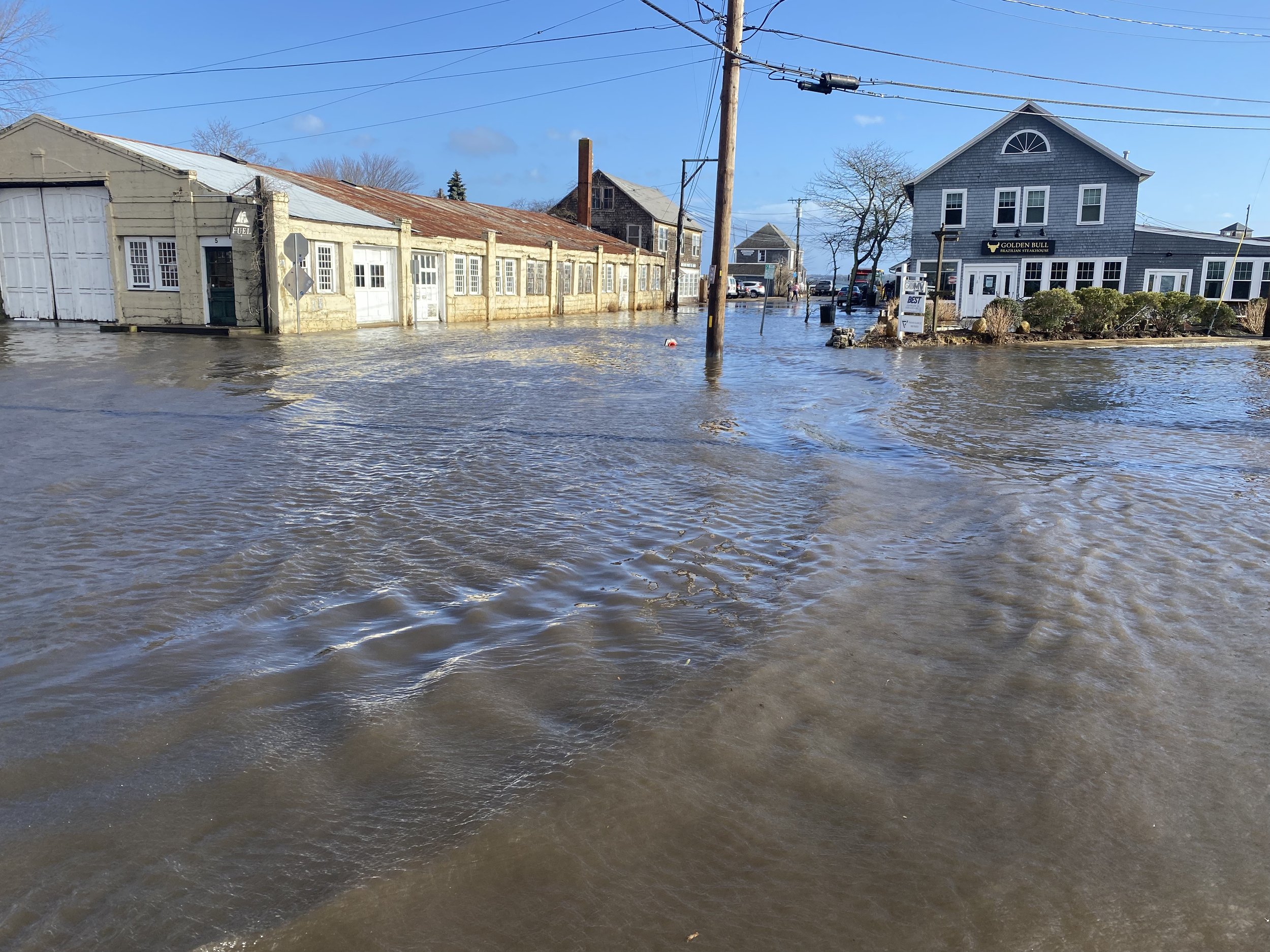
Tisbury Stormwater Management
Scroll down to see how the Town of Tisbury is dealing with its stormwater issues. How about Five Corners flooding on a sunny day, shown here?
Impervious Surface Disconnection
In 2019, representatives from the EPA and their collaborators worked with Tisbury Town and MVC officials, as well as Mass DOT, to study stormwater runoff in Tisbury. The aim of this work was to identify ways to “disconnect impervious surfaces” (paved roads and structures that block stormwater from infiltrating into the soil). The outcome of this work was a list of suggestions on implementation of stormwater control measures within Town. A website was created on the EPA website with the details of this project.
Flooding near the Steamship Authority and Five Corners
Impervious Surface Disconnection - Implementation
During 2021, one of the collaborators from the EPA study, Dr. James Houle of the University of New Hampshire Stormwater Center, was approved for a EPA Southeast New England Program (SNEP) grant to implement stormwater control measures (SCMs) on Martha’s Vineyard. Dr. Houle partnered with Town officials from both Tisbury and Oak Bluffs, as well at the MVC, to identify sites where SCM measures would be most beneficial. It is anticipated that the work supported by the grant will occur in phases, with the first implementations serving as models for further work. Installation of the first of the proposed SCMs has now occurredi at the end of Grove Avenue near the small Town beach.
The end of the street on Grove Ave has long been identified by TWI as a problem area. Also recognized by the Town, this area benefitted from a capital improvement project by the Town in 2022.. Grove Ave represents a typical example of the end-of-road issues within Town. The steep slopes produce very high-velocity runoff that dead-ends into sandy beaches, causing erosion. In April of 2023 Dr. Houle and his contractors replaced and modernized the old non-functional leaching catch basins.. In addition, they added a subsurface gravel filter (below – graphic courtesy of the UNH Stormwater Center), to collect and manage stormwater coming down the road. This design provides stormwater storage and infiltration of the runoff through the gravel and into the soil below, therefore reducing the volume and energy of the stormwater currently degrading the beach entrance.. The hope is that this installation can serve as a demonstration project for the Town. Specifically, the design and layout could be a model for stormwater management at other end-of-road locations where stormwater has eroded beach surfaces.
TWI is hopeful that the collaboration with the UNH Stormwater Center could facilitate the Town’s development of stormwater solutions for other troublesome locations, such as the West Spring Street drainage system and outfall and Lake Street.
Subsurface Gravel Filter for the end of Grove Ave (Image courtesy of the UNH Stormwater Center)
Stormwater Management for Homeowners
The Mass.gov Coastal Zone Management’s Stormwater Solutions for Homeowners website, which gives property owners a range of best practices for reducing and treating stormwater on site, now includes a new fact sheet on Preventing Erosion. This fact sheet provides techniques that help slow and redirect stormwater, reducing erosion and capturing sediments and attached pollutants on site.
Other fact sheets on the website include Vegetated Buffers, “Green” Lawn and Garden Practices, Rain Gardens, Reducing Impervious Surfaces, and Minimizing Contaminants (and stay tuned for a Vegetated Swales fact sheet coming soon).
Each fact sheet includes information on the technique’s benefits; recommended guidelines for locating, designing, implementing, and maintaining specific practices; and a brief overview of regulatory and permitting requirements. Step-by-step instructional guidelines, photos, and figures can help homeowners select the most appropriate projects and practices for their property to help protect local water quality, reduce flooding, and improve wildlife habitats.

